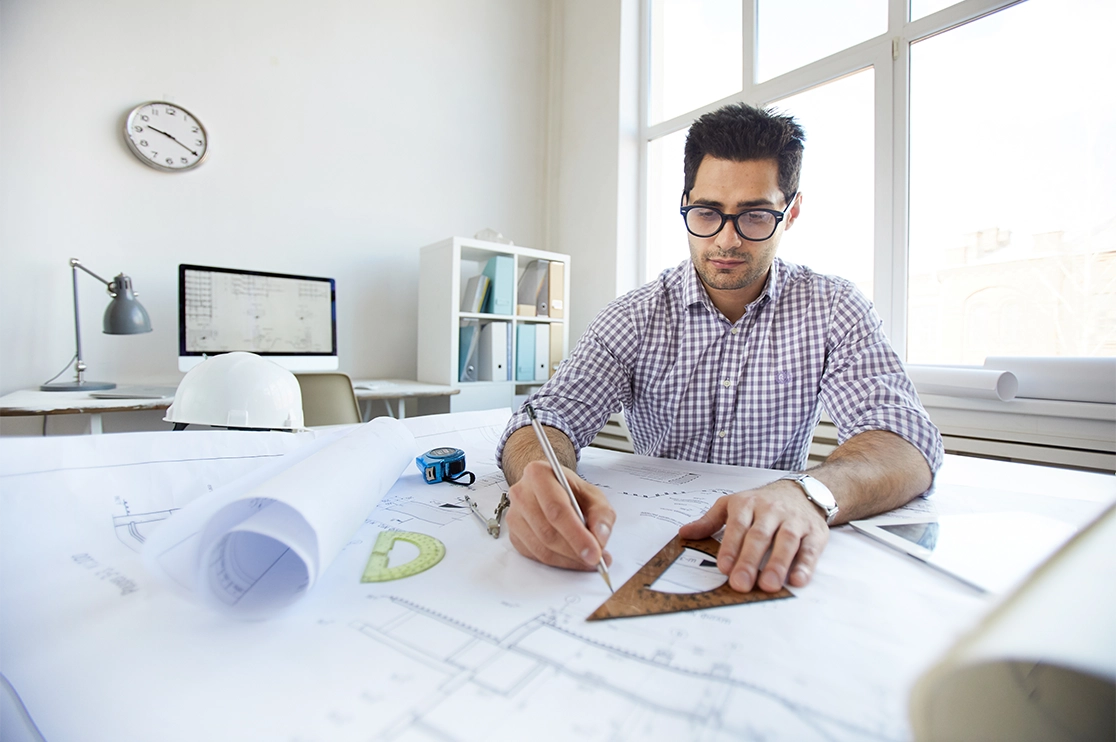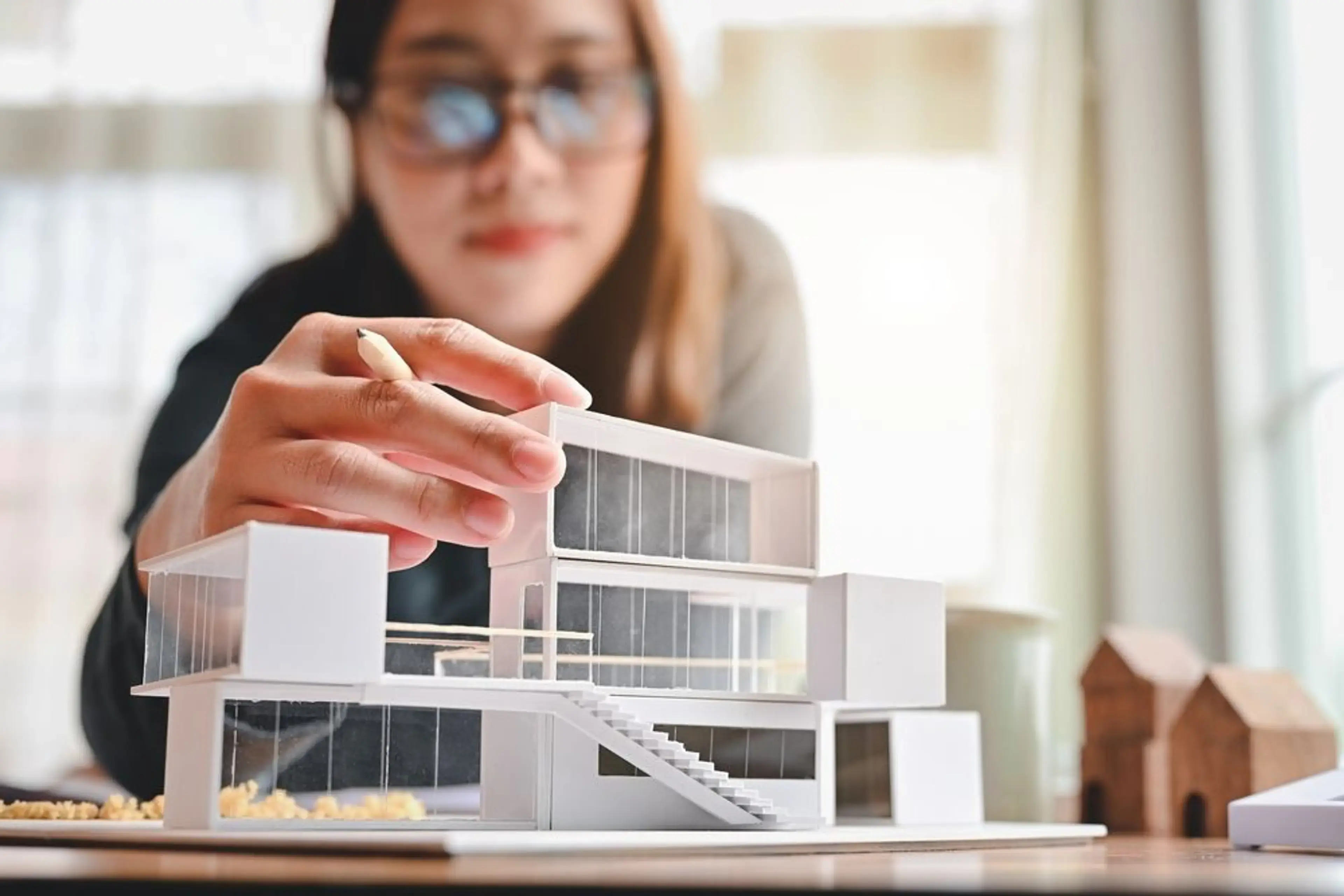Architect Portfolio Tips for Getting Noticed in the Industry
Architect Portfolio Tips for Getting Noticed in the Industry
Blog Article
Comprehending the Diverse Career Paths Available for Aspiring Architect
As an ambitious Architect, you have a globe of career paths waiting on you. Each course uses one-of-a-kind challenges and possibilities to use your imagination and technical knowledge. Whether you're attracted to traditional architecture or the nuances of sustainable design, there's a particular niche that straightens with your passions. Recognizing these varied alternatives can form your specialist journey, however which direction will you pick to discover first?
Conventional Architecture: Creating Structures and Structures
Conventional style focuses on designing structures and structures that blend capability with aesthetic allure. Your styles can reflect social heritage, showcasing local practices while meeting modern requirements.
You'll create skills in drafting, model-making, and site evaluation, allowing you to imagine and communicate your ideas properly. Engaging with clients, you'll need to recognize their vision and convert it into possible layouts.
Additionally, developing codes and sustainability techniques are vital in your work, guaranteeing your structures are eco pleasant and secure. As you grow in your profession, you'll discover chances in household, business, or perhaps restoration projects, each offering distinct difficulties. Accepting traditional architecture paves the method for a satisfying profession that pays homage to the past while shaping the future.
Urban Planning: Shaping Neighborhoods and Public Spaces
As a hopeful Architect, you can play an essential role as an urban planner, transforming just how areas operate and connect. By utilizing community engagement approaches, you'll assure that citizens have a voice fit their environment. And also, incorporating sustainable design concepts will help produce areas that not only fulfill today's requirements however also shield the future.
Function of Urban Planners
While numerous might think about designers as the sole dreamers behind buildings, city coordinators play a vital role fit the wider landscape of areas and public spaces. They assess land usage, zoning laws, and area needs to develop sustainable settings that enhance lifestyle. By working together with numerous stakeholders, you'll assist design parks, transportation systems, and houses that promote social interaction and ease of access. Urban organizers likewise focus on ecological factors to consider, making sure that advancements integrate environment-friendly areas and assistance biodiversity. Your knowledge in spatial layout and area dynamics permits you to imagine future growth while preserving social heritage. In this vital function, you'll directly affect how individuals experience their surroundings, making every task a possibility for positive adjustment.
Area Engagement Strategies
Effective community engagement strategies are vital for urban planners to assure that the voices of homeowners are listened to and valued in the preparation process. To promote significant dialogue, you ought to prioritize open discussion forums and workshops where area participants can express their ideas and problems. Usage surveys and social media to get to a more comprehensive audience, guaranteeing varied viewpoints are included. Collaborating with neighborhood companies can improve count on and help with deeper links. It's vital to give clear details regarding decision-making processes and suggested projects, permitting citizens to feel educated and empowered. By proactively listening and including responses, you'll produce rooms that show the community's requirements, ultimately bring about more sustainable and successful city atmospheres. Welcome transparency and constant discussion for lasting effect.
Lasting Layout Concepts
When creating metropolitan spaces, incorporating sustainable layout concepts is vital for producing environments that thrive both environmentally and socially. Take into consideration integrating green rooms, like gardens and parks, to improve biodiversity and enhance air quality.
Creating with water conservation in mind is also vital-- think of rain yards and permeable surfaces to manage stormwater. Including neighborhood participants throughout the planning process warranties that the spaces you develop satisfy their demands and motivate social communication. By embracing these concepts, you'll add to vivid, sustainable city landscapes that benefit every person.

Landscape Design: Developing Sustainable Outside Settings
As you explore landscape design, you'll uncover important style concepts that produce functional and stunning outside rooms. Lasting practices play an essential function in ensuring these environments flourish while lessening ecological influence. And also, you'll locate a selection of career opportunities that enable you to make a genuine distinction in exactly how individuals interact with nature.
Style Concepts in Landscape
Recognizing layout principles in landscape architecture is vital for producing lasting outdoor atmospheres that balance with nature. You'll require to ponder elements like scale, equilibrium, and percentage to ensure your designs feel natural and inviting. Integrating native plants not only enhances biodiversity but additionally lowers water use, making your landscape durable. Consider the circulation of area and exactly how people connect with it; pathways and seating areas need to welcome exploration and leisure. Furthermore, focus on seasonal changes, designing with products that match the surroundings year-round (Architect). By focusing on sustainability and aesthetic appeals, you can create exterior areas that improve the neighborhood and promote wellness. Embracing these concepts will establish a solid navigate to this website foundation for your occupation in landscape design.
Sustainable Practices Introduction
Lasting practices in landscape architecture not just focus on aesthetics yet likewise prioritize eco-friendly health and wellness and resource preservation. You can develop rooms that promote dirt health and wellness, such as using natural materials and exercising permaculture principles. Inevitably, these methods guarantee your layouts benefit both individuals and the atmosphere for years to come.
Job Opportunities Exploration
With a strong foundation in lasting techniques, landscape architecture offers a variety of profession paths that allow you to make a meaningful impact on the environment. Urban organizers often collaborate with landscape engineers to develop eco-friendly areas in urban settings, boosting city livability. If you're enthusiastic regarding education, consider becoming a landscape style instructor, motivating future generations.
Sustainable Design: Focusing on Eco-Friendly Practices
As you discover your occupation in architecture, welcoming environmentally friendly practices can establish you apart in an affordable field. Sustainable layout Get More Info focuses on creating structures that reduce environmental influence while improving occupant well-being. By including sustainable products, energy-efficient systems, and lasting building strategies, you'll contribute to a greener future.
Start by obtaining understanding of green qualifications like LEED or BREEAM, which can reinforce your qualifications. Consider just how natural light, air flow, and thermal efficiency can enhance design. Work together with designers and ecological experts to innovate options that reduce waste and save sources.
Do not fail to remember the relevance of area participation-- appealing neighborhood stakeholders can inspire layouts that balance with the setting. As customers progressively focus on sustainability, your experience in environment-friendly techniques will not only draw in tasks but also meet your interest for liable architecture. Embrace this vital facet of the profession, and view your occupation grow.
Historical Conservation: Protecting and Restoring Cultural Heritage
While you commence on your architectural journey, consider the necessary duty of historical conservation in keeping our social heritage. This area concentrates on the security and repair of substantial buildings, sites, and frameworks that tell the stories of our past. By engaging in historical conservation, you'll aid secure the building tradition that shapes community identification.
As a historic conservation Architect, you'll analyze historic importance and analyze the condition of frameworks. You'll work very closely with guardians and historians to ensure genuine repair techniques are utilized. This career path permits you to blend imagination with research, enabling you to create services that appreciate original materials and workmanship.
Your job not only adds to sustainability by recycling existing structures yet additionally fosters a sense of pride within neighborhoods. Accepting this course will aid you become a guardian of background, maintaining the stories and aesthetics that enhance our lives.
Inside Style: Enhancing Indoor Spaces
Historic preservation and interior design both share a dedication to enhancing the built atmosphere, however they concentrate on various aspects. While historic preservation highlights preserving a framework's historical and cultural value, interior design nos in on enhancing interior rooms for functionality and looks.
As an ambitious Architect, you'll locate that indoor architecture allows you to blend imagination with technical skills. You'll develop spaces that not only look good but likewise advertise comfort and effectiveness. This field entails understanding just how light, shade, and click here for more info products engage within an area, impacting mood and usability.
You'll work with numerous tasks, from household homes to industrial offices, making sure that each setting satisfies the requirements of its residents. By prioritizing individual experience, you can change interiors into functional and inspiring spaces, making a significant influence on exactly how people communicate with their environments. Embrace the opportunity to improve indoor atmospheres and shape the means people function and live.
Industrial Design: Combining Performance With Appearances
Commercial design plays an essential duty in creating items that effortlessly mix looks with performance, making certain that what you utilize day-to-day is not only aesthetically appealing however also functional. As an aspiring Architect, you can immerse yourself in this area, focusing on developing every little thing from furniture to customer electronic devices. Your work entails understanding individual demands, materials, and making processes, enabling you to develop cutting-edge services that boost day-to-day experiences.
In industrial style, you'll often work together with marketing experts, producers, and engineers, guaranteeing that your styles are not just beautiful but likewise feasible. You'll discover to balance type and function, prioritizing functionality without compromising design. By developing your skills in laying out, 3D modeling, and prototyping, you'll be well-equipped to bring your concepts to life. This occupation path supplies a vibrant atmosphere where creativity meets practicality, making it a rewarding choice for architects curious about shaping the products of tomorrow.
Regularly Asked Questions
What Educational Certifications Do I Need to End Up Being an Engineer?
To become a designer, you'll require a professional degree in design, generally a Bachelor's or Master's. In addition, you'll need to complete an internship and pass the Architect Enrollment Examination to practice lawfully.
Are There Qualification Requirements for Different Architectural Job Paths?
Yes, there're certification demands for numerous building paths. Architect. You'll need to pass examinations, full teaching fellowships, and in some cases seek specialized training, depending on your selected emphasis, like landscape architecture, metropolitan layout, or historic conservation
What Software Application Abilities Are Essential for Engineers Today?

Just How Can I Gain Practical Experience While Studying Design?
You can get functional experience by interning at building firms, getting involved in layout competitors, offering for neighborhood tasks, or collaborating with classmates on real-world jobs. These possibilities boost your skills and develop useful connections in the industry.
What Task Opportunities Exist Outdoors Conventional Style Firms?
You can check out numerous work chances outside traditional design companies, like metropolitan preparation, indoor style, landscape architecture, building monitoring, realty development, or perhaps roles in sustainability consulting. Each deals one-of-a-kind difficulties and rewards.
Whether you're attracted to standard design or the nuances of sustainable design, there's a niche that straightens with your interests.When making urban spaces, integrating sustainable layout concepts is critical for producing settings that flourish both ecologically and socially.As you explore landscape architecture, you'll find essential style concepts that produce beautiful and practical exterior areas.Recognizing style concepts in landscape style is vital for producing lasting outdoor atmospheres that harmonize with nature.In industrial design, you'll commonly collaborate with marketing experts, engineers, and manufacturers, guaranteeing that your designs are not only gorgeous yet likewise viable.
Report this page